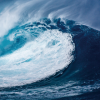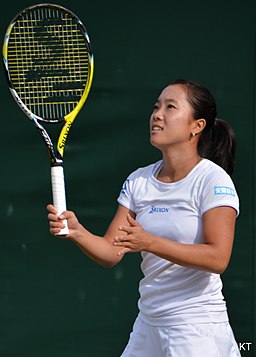1.Prologue
In this series on leading tennis racket manufacturers, we’ve covered the following brands so far:
・Wilson
・Head
・Babolat
・Yonex
This time I will be writing about Prince, Srixon/Dunlop, and Bridgestone.
2.Tennis Ball Machine Manufacturer Prince
Prince was founded in 1970 in New Jersey, USA as a manufacturer or tennis ball machines. It later began making tennis rackets as well.
The person behind that shift was Howard Head, the founder of the ski (and later tennis racket) manufacturer Head in 1950. After selling his company in 1969, Head retired and began taking tennis lessons, for which he got himself a Prince tennis ball machine. Frustrated at his progress and the small sweet spot of the racket, he became the majority shareholder and chairman of the board of Prince, and came up with the design for Prince’s signature oversized racket.
Versions of that oversized racket, called Prince Original Graphite Oversize, or “POG Oversize", were used in the 80s by players like Andre Agassi (in the second half of his career, Agassi would use Head rackets), current coach of Nishikori Kei, Michael Chang, and Argentinian player Gabriela Sabatini. (An updated version of the POG, called the “Classic Graphite 107"—with a 107 square inch racket head—is currently available.)
In July 2012, Prince filed a voluntary petition for Chapter 11 reorganization in U.S. Bankruptcy Court. It later recovered from bankruptcy, and in 2014 moved its headquarters from New Jersey to Atlanta, which is said to have one of the U.S.’s largest tennis communities. In recent years, players that have used Prince rackets include David Ferrer (until 2016), doubles duo the Bryan Brothers (until 2017), and Japanese player Sugiyama Ai.
Currently American No. 1 player (as of January 2020) John Isner endorses the Textreme Beast 100, while French player Lucas Pouille endorses the Textreme Tour 100P. (In Japan, Prince brand tennis gear is available under license to the Japanese fishing equipment company Globeride. The brand’s product lineup in Japan is slightly different, however. For example, the Textreme Beast 100 is only available overseas, while the Textreme Tour 100P is available in Japan.)
Today, the Prince brand is no longer the big name it once was in Japan. In the U.S., however, it continues to have a strong following among club-level and collegiate players. The Textreme Beast 100 and Textreme Tour 100 are especially popular, partly due to being relatively inexpensive compared to other racket brands. I often see amateur players carrying three to four of them, all strung with the same string.
3.Making the Most of a Prince Racket
The Prince monofilament string Synthetic Gut Duraflex is sold for around five dollars, making it a no-brainer for players to keep their strings fresh by having their rackets restrung frequently. It helps that the strings are available in a variety of colors—a key selling point among recreational players and kids.
In the U.S., you used to be able to get your racket restrung at tennis clubs for as low as five dollars, and sometimes even for free. This encouraged players to restring their rackets frequently. Some players even had their own stringing machine in their garage, which made it easy for them to test out a variety of different string tensions. That kind of do-it-yourself approach feels distinctly American.
When it comes to Japanese recreational players—and this applies not just to tennis but to sports like golf and skiing as well—they often go out of their way to purchase the same equipment as top-tier professionals without any regard to their own level of skill or stamina. American recreational players, on the other hand, tend to choose reasonably priced equipment that matches their skill level. What’s more, they take pleasure in customizing their own rackets to best suit their needs and style of play.
This flexibility applies not just to strings and overgrips but to undergrips as well. Many players add lead tape to their frames to adjust the weight balance and make their “weapons" their own.
It pains me to see Japanese recreational players walking around with the soiled white grip of their solitary racket sticking out their backpack, as it does to see players stubbornly continuing to use the weathered strings that originally came with their expensive player’s racket.
4.Srixon and Dunlop
Srixon is owned by SRI Sports Limited, a subsidiary of the Japanese conglomerate Sumitomo Rubber Industries Ltd. Srixon is a brand specializing in tennis and golf, and its tennis products are usually marketed overseas under the Dunlop name.
Dunlop Sport is a tennis racket manufacturer founded in the U.K. in 1910. It was acquired by Sumitomo Rubber Industries in 2017; since then SRI Sports owns the rights to the Dunlop name in most parts of the world. After the acquisition Srixon began releasing its CX and CZ lines of tennis rackets, which combine racket technology from both Srixon and Dunlop.
Overseas, the Srixon brand is perhaps best known for providing golf clubs and balls for players like Matsuyama Hideki.
Tennis pros that endorse Srixon/Dunlop rackets include Kevin Anderson on the men’s tour, and Kurumi Nara and Doi Misaki on the women’s tour. Michael Chang also currently endorses Srixon rackets.
Srixon rackets on the whole have great plow-through and power assist, and are recommended for beginners and intermediate players.
Here are my recommendations for Japanese players: for well-rounded intermediate and advanced players I recommend the REVO CZ98D (285 g), while for heavy hitters I recommend the CX 200 16x19, which is endorsed by Doi Misaki. For players who like to be on the attack and impart a lot of spin on the ball, I recommend the REVO CV 3.0 (300 g), which is endorsed by Nara Kurumi. Anderson uses the CX 200 Tour 18x20, which is 10 g heavier than the CX 200 16x19.
5.Tire Manufacturer Bridgestone
Bridgestone is a Tokyo-based company best known for manufacturing tires. In 2005 is surpassed French company Michelin to become the largest tire maker in the world.
Company subsidiary Bridgestone Sports manufactures golf clubs and tennis rackets. While it is not so well known in terms of the global tennis market, it is a very popular racket brand in Japan.
Many high school and collegiate players that compete at the national level use Bridgestone rackets.
For advanced players I would recommend the X Blade Rs 300, which has well-balanced mid-range specs. It combines power and control and is great for well-rounded players.
Bridgestone also offers the option to customize their rackets according to your preferences—a key consideration for collegiate players.
6.Epilogue
Over the last five columns, I have written about leading tennis racket manufacturers around the world and their product lineups. By also noting which pro tennis players endorse what racket, I hope I have provided readers with a little bit of insight as to what kind of playing styles are a good match for different racket types.
For those who are looking to take up tennis and beginners/intermediate players who are serious about improving, the advice I would offer is to test out many different rackets and racket types and stay away from narrowing it down to a single racket for as long as possible. It is often effective to use different rackets for when you practice your groundstrokes or your serve, or when you play singles or doubles.
The most important point is to choose a racket that “teaches" you proper form and swing technique—not one that will gradually break yours down.
For example, for beginners and intermediate players who have trouble with proper unit turns or weight distribution when they go from their backswing through their follow-through, a lighter racket will condition you to swing with your arm, rather than with your entire body. Likewise, if you have trouble meeting the ball with the sweet spot of your racket, choosing a racket with a large head will only make your swing less precise over time. These kinds of choices can lead to injury over the mid-to-long term.
Of course, other important considerations include how serious you are about training, your body type, your age, etc. For recreational players who just want to have fun, there’s little point in sticking with a racket with a frustratingly small sweet spot. Likewise, for senior players, by all means, choose a racket with a larger head that offers power assist.
And one final thing—don’t wait until you break your strings or your overgrip becomes tattered before replacing them. Keep them fresh and well maintained, and you will be able to tap into the full potential of your racket.


















